The ancient Aztec civilization continues to captivate the imagination with its rich cultural heritage and intricate systems of timekeeping. Among their numerous contributions, the Aztecs developed a complex calendar system that served as the foundation of their society. This mesmerizing system, often referred to as the Aztec Calendar, reflects their ingenuity and understanding of the cosmos. Unraveling the mysteries of this ancient timekeeping system allows us to delve into the fascinating world of the Aztecs and gain valuable insights into their beliefs, rituals, and perceptions of time. In this article, we will dive deep into the intricacies of the Aztec Calendar, examining its components, interpretation, and the significance it holds in the legacy of the Aztec civilization.
Contents
- Ancient Aztec Civilization
- The Aztec Calendar System
- Interpreting the Aztec Calendar
- Sacred Rituals and Celebrations
- Significance and Legacy
- Conclusion
-
Frequently Asked Questions
- 1. What is the significance of the Aztec Calendar in ancient Aztec civilization?
- 2. How did the Aztecs measure time using their calendar system?
- 3. What were the components of the Aztec Calendar Stone?
- 4. How did the Aztecs interpret the Tonalpohualli?
- 5. What was the purpose of the Xiuhpohualli, the solar calendar?
- 6. How did the Aztecs celebrate important dates in their calendar system?
- 7. What role did the Aztec Calendar play in religious ceremonies?
- 8. What is the legacy of the Aztec Calendar in modern times?
- 9. Is the Aztec Calendar still used today?
- 10. Are there any other ancient civilizations that had similar calendar systems?
- References
-
Frequently Asked Questions
- How did the Aztecs measure time?
- What was the purpose of the Aztec calendar?
- How accurate was the Aztec calendar?
- What were the components of the Aztec Calendar Stone?
- What does the Tonalpohualli represent?
- What does the Xiuhpohualli represent?
- How did the Aztecs celebrate the passing of a tonalpohualli cycle?
- What were some important Aztec festivals and ceremonies tied to the calendar?
- How did the Aztec calendar influence everyday life?
- What is the legacy of the Aztec calendar?
- References
- Read More
Ancient Aztec Civilization
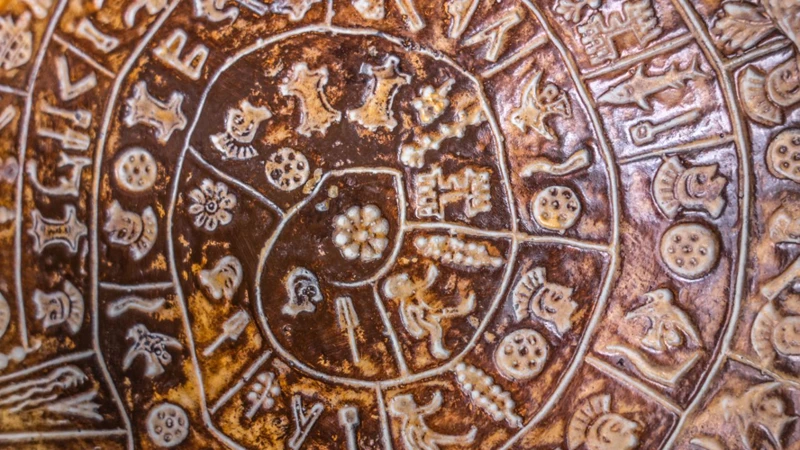
The Ancient Aztec Civilization flourished in Mesoamerica from the 14th to the 16th century. Revered for their advanced cultural practices, architectural marvels, and unique cosmology, the Aztecs left an indelible mark on the history of civilization. Originating from the semi-nomadic Mexica people, the Aztecs eventually established their capital city of Tenochtitlan (modern-day Mexico City). They built an empire spanning a vast territory, encompassing diverse regions and peoples. The Aztecs were known for their impressive agricultural techniques, sophisticated social structure, and complex religious beliefs. Central to their worldview was the belief in cyclical time, where the rise and fall of civilizations were interconnected with celestial events. To understand the Aztecs and their calendar system is to delve into a world where mythology, astronomy, and daily life converged in a tapestry of ritual and spiritual significance. Some of the neighboring civilizations in the region also influenced the Aztec culture, as demonstrated by their integration of elements from the Olmec, Maya, and Zapotec civilizations. Their intricate societal structure revolved around the central authority of kings and nobles, with an emphasis on warfare and tribute. The Aztec civilization came to an unfortunate end with the arrival of Spanish conquistadors led by Hernán Cortés, leading to the colonization of the region. However, the legacy of the ancient Aztecs remains a testament to their remarkable achievements and enduring cultural impact.
The Aztec Calendar System
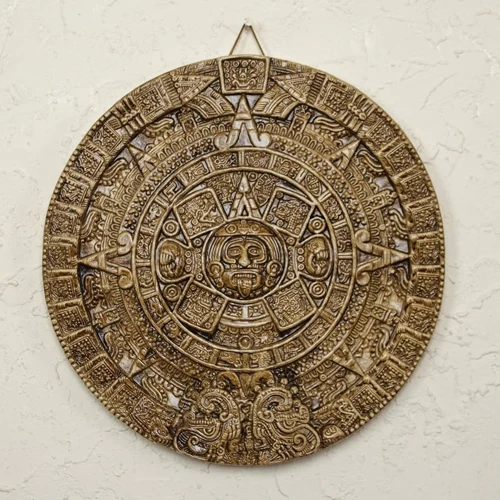
The Aztec Calendar System, also known as the tonalpohualli, was a sophisticated and intricate method of timekeeping used by the ancient Aztecs. This system was essential to the Aztec civilization as it provided a framework for religious ceremonies, agricultural practices, and the organization of daily life. The Aztec calendar consisted of two primary components: the tonalpohualli, which was a sacred calendar of 260 days, and the xiuhpohualli, a solar calendar of 365 days. The tonalpohualli was comprised of 20 “day signs” and 13 “numbers,” creating a total of 260 unique combinations. Each day sign and number held specific meanings and was believed to influence the events and characteristics of individuals born on those particular days. The xiuhpohualli, on the other hand, followed a 365-day cycle, divided into 18 “months” of 20 days each, with an additional 5 “nameless” or “unlucky” days at the end of the year. This system allowed the Aztecs to track the agricultural season, predict celestial movements, and plan important rituals and festivities. By understanding these calendars, we can delve deeper into the spiritual and cultural significance that time held for the Aztec people, revealing a world where myth, symbolism, and cosmic forces intertwined.
1. Basics of the Aztec Calendar
The Basics of the Aztec Calendar revolve around two main components: the Tonalpohualli and the Xiuhpohualli. The Tonalpohualli, also known as the Sacred Calendar, was a 260-day cycle that played a crucial role in the daily lives and spiritual practices of the Aztecs. It consisted of 20-day signs, represented by unique combinations of 13 numbers and 20 glyphs. These symbols were believed to embody different energies and personalities, influencing various aspects of life such as agriculture, warfare, and personal characteristics. The Tonalpohualli was used for divination, determining propitious days for significant events, and guiding individual destinies.
On the other hand, the Xiuhpohualli, or the Solar Calendar, was a 365-day cycle divided into 18 months, each lasting 20 days. In addition to the 18 months, there was an added period of 5 “nameless” days known as Nemontemi, dedicated to reflection and purification. The Xiuhpohualli primarily focused on agricultural practices and the seasonal changes crucial for successful crop cultivation. It identified the most favorable times for planting, harvesting, and religious ceremonies.
The combination of the Tonalpohualli and the Xiuhpohualli created a unique calendar system where the two cycles intersected every 52 years, known as the Calendar Round. This event held immense significance for the Aztecs as it marked a complete cycle and symbolized the rebirth of time.
Understanding the Basics of the Aztec Calendar necessitates recognizing the intricate relationship between the cycles, the celestial bodies, and the cultural practices of the civilization. The Aztecs’ attention to both the lunar and solar aspects of time demonstrates their profound connection with nature and their profound belief in the cyclical nature of the universe. The Aztec Calendar served as a guide for their daily lives, ensuring harmony with the cosmic forces and reaffirming their place within the grand tapestry of existence.
2. Components of the Calendar Stone
The Calendar Stone, also known as the Sun Stone, is a remarkable artifact that encapsulates the complexity of the Aztec calendar system. This massive stone disc, measuring over 3 meters in diameter and weighing more than 24 tons, is a breathtaking testament to Aztec craftsmanship and astronomical knowledge. The stone is adorned with intricate carvings and symbols that represent various elements of Aztec cosmology.
At the center of the Calendar Stone sits the face of the sun god, Tonatiuh, symbolizing the importance of the sun in Aztec culture. Surrounding Tonatiuh are four rectangular panels that correspond to the four previous eras or suns that preceded the Aztec era. These panels depict the celestial monsters, deities, and symbols associated with each era. The outermost ring of the Calendar Stone is composed of two concentric circles, embodying the dual nature of time and space in Aztec cosmology.
Within these concentric circles, intricate glyphs and symbols represent the days, months, and years of the Aztec calendar. These symbols correspond to a combination of numbers, names, and astrological signs, offering a complex system for tracking time and celestial cycles. The intricate details of the Calendar Stone showcase the Aztecs’ profound understanding of the cosmos and their belief in the interconnectedness of time, nature, and human existence.
The Calendar Stone also serves as a reflection of the Aztecs’ religious and sacrificial rituals, as it incorporates elements of myth and symbolism associated with their deities. It is believed that the stone was used for ceremonial purposes, possibly as an altar for human sacrifices or as a focal point for observing celestial events. The precise alignment of the Calendar Stone and its symbols with astronomical phenomena highlights the Aztecs’ reverence for the heavens and their perception of time as a sacred and cyclical force.
Today, the Calendar Stone stands as an iconic representation of Aztec culture and continues to fascinate scholars and visitors alike. Its enigmatic carvings and intricate details offer a glimpse into the sophisticated calendar system and belief system of the ancient Aztecs. The Calendar Stone serves as a powerful reminder of the ingenuity and complexity of ancient civilizations and the timeless quest to understand the mysteries of the universe.
[Internal link: Did you know that the Aztecs were also influenced by the Ophiuchus constellation, associated with medicine and healing? Learn more about the Ophiuchus and its significance in Aztec mythology and astronomy.](/ophiuchus-and-medicine-healing-serpent-bearer/)
Interpreting the Aztec Calendar
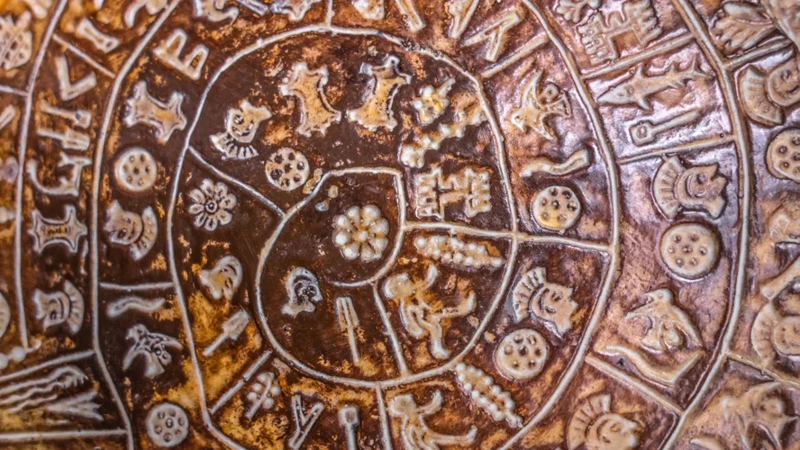
Interpreting the Aztec Calendar requires a deep understanding of its intricate components and the religious beliefs of the ancient Aztec civilization. The Aztec Calendar consisted of two primary calendars: the Tonalpohualli, also known as the Sacred Calendar, and the Xiuhpohualli, or the Solar Calendar. The Tonalpohualli was a 260-day calendar that played a crucial role in determining the religious ceremonies and rituals. It was composed of 20 named days and 13 numerals, creating a repeating cycle of unique combinations. Each day had its own significance and governing deity, and it was believed that the combination of the day and numeral had a profound impact on an individual’s personality and destiny. On the other hand, the Xiuhpohualli was a 365-day solar calendar used for agricultural and seasonal purposes. It consisted of 18 named months, with each month featuring a specific festival or celebration. The interpretation of the Aztec Calendar involved deciphering the predictions, auspicious dates, and divine messages embedded within the complex interplay of the two calendars. Shamans and priests held the responsibility of understanding and translating these messages, ensuring the harmony between the celestial events and the human realm. The intricate nature of the Aztec Calendar reflects the deep connection the Aztecs had with nature, astronomy, and the spiritual realm. It serves as a profound testament to their advanced understanding of the cosmos and their quest for meaning in the cyclical nature of time and existence.
1. Tonalpohualli: The Sacred Calendar
The Tonalpohualli, also known as the Sacred Calendar, was a fundamental component of the Aztec calendar system. This calendar was based on a 260-day cycle consisting of twenty named days and thirteen numbers. Each day signified a specific combination of a day name and a number, creating a unique energy for each day. These day signs, or “tonalpohualli,” held profound significance and were believed to influence various aspects of daily life, including birth, marriage, and even divination. The twenty day signs were represented by glyphs such as Jaguar, Wind, and Eagle, each associated with specific characteristics and deities. The tonalpohualli operated in parallel with the xiuhpohualli, the Solar Calendar, to form a more comprehensive understanding of time in Aztec culture. The tonalpohualli was also closely tied to religious ceremonies and rituals, aligning with different deities and celestial events. Interestingly, the Sacred Calendar was believed to have origins predating the Aztec civilization, influenced by earlier Mesoamerican cultures like the Olmecs and Mayas. Exploring the Tonalpohualli provides a glimpse into the intricate spiritual beliefs of the Aztecs and their connection to the cyclic nature of the cosmos.
2. Xiuhpohualli: The Solar Calendar
The Xiuhpohualli, also known as the Solar Calendar, was a vital component of the Aztec calendar system. Unlike the Tonalpohualli, which focused on the sacred days, the Xiuhpohualli centered around the solar year. This calendar consisted of 18 months, each lasting 20 days, for a total of 360 days. To make up for the additional five and a quarter days in the solar year, the Aztecs added an intercalary month called “Nemontemi.” This month was considered a time of uncertainty and caution. It was believed to be an unpropitious period during which the earthly and heavenly realms were in disharmony. People would often refrain from participating in important events or performing certain activities during Nemontemi. The months in the Xiuhpohualli were associated with different agricultural activities, such as sowing, harvesting, or celebrating specific deities. This calendar not only served as a practical tool for organizing daily life but also held deep religious and agricultural significance for the Aztecs. Understanding the intricacies of the Solar Calendar allows us to glimpse into the immense reverence the Aztecs had for the cycles of the sun, guiding their agricultural practices, and connecting them to the cosmic forces that governed their world. Pondering the Aztec’s understanding of time in relation to the celestial bodies reminds us of the universal human fascinations with the cosmos and the interconnectedness between humanity and the natural world. To learn more about ancient mythologies, you can explore the oldest surviving Mesopotamian mythology or dive into the captivating legend of Orion.
Sacred Rituals and Celebrations
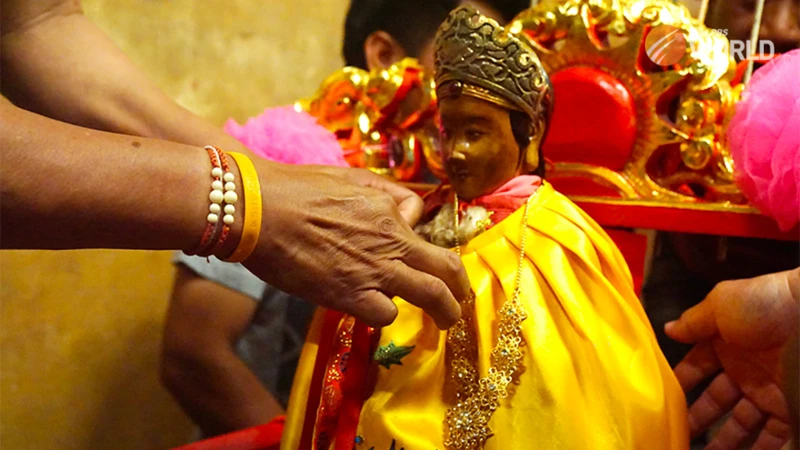
Sacred Rituals and Celebrations held vital importance in the ancient Aztec civilization, serving as a means to connect with the divine, honor deities, and ensure the harmony of the universe. The Aztecs believed that rituals played a crucial role in maintaining cosmic balance and sustaining the cycles of life. Many of these ceremonies were intricately tied to the Aztec Calendar, as it provided a framework for determining auspicious dates and aligning their actions with the celestial order. One of the most significant rituals was the New Fire Ceremony, which took place every 52 years. This event symbolized the renewal of the cosmic cycle and involved the extinguishing of all fires across the kingdom followed by the lighting of a new sacred fire. The ceremony was accompanied by elaborate processions, offerings, and sacrifices to appease the gods and ensure the continuation of the world. Another revered celebration was the Feast of Toxcatl, dedicated to the deity Tezcatlipoca. This month-long festival involved various rites, including music, dance, elaborate costumes, and sacrifices. It culminated in a theatrical reenactment of the mythological battle between Huitzilopochtli, the sun god, and Tezcatlipoca. Women would take part in the festival of Toci, honoring the goddess of childbirth, fertility, and weaving. The ceremonies featured dancing, offerings, and rituals specific to women’s roles and responsibilities within Aztec society. These sacred rituals and celebrations not only served to reinforce religious beliefs but also created a strong sense of community and cultural identity among the Aztec people. Today, the legacy of these ancient rituals lives on, offering a glimpse into the rich spiritual traditions of the Aztecs and their profound reverence for the divine forces that shaped their world.
Significance and Legacy
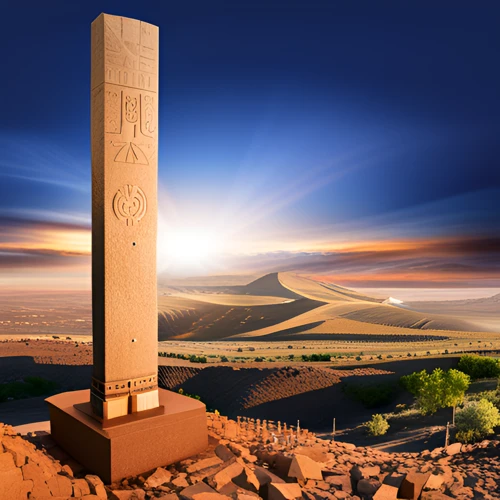
The significance and legacy of the Aztec Calendar are vast and multifaceted. This ancient timekeeping system served as the foundation of Aztec society, permeating every aspect of their lives, from agriculture to religious rituals. The calendar held immense spiritual importance, as it provided a means to understand and interpret the forces of the universe. By tracking celestial events and aligning their activities with the cycles of time, the Aztecs believed they could maintain harmony with the cosmos and ensure prosperity. The Aztec Calendar also played a crucial role in religious ceremonies, with specific days and festivals dedicated to honoring various deities and spirits. These rituals included offerings, dances, and other elaborate activities that connected the Aztecs with their gods and ancestors. The calendar system facilitated the organization of Aztec society, allowing for efficient planning and coordination of events such as agricultural cycles, military campaigns, and governance. The legacy of the Aztec Calendar extends beyond the fall of the civilization itself. Today, we continue to study and appreciate the complexity and precision of this ancient timekeeping system. It serves as a testament to the intellectual and scientific achievements of the Aztecs, as well as their deep connection to nature and the cosmos. Additionally, the calendar’s influence can be seen in modern-day Mesoamerican cultures, which still incorporate elements of the Aztec calendar in their traditions and practices. The Aztec Calendar stands as a remarkable testament to the ingenuity, spirituality, and cultural richness of the Aztec civilization, leaving an enduring legacy that continues to captivate and inspire.
Conclusion
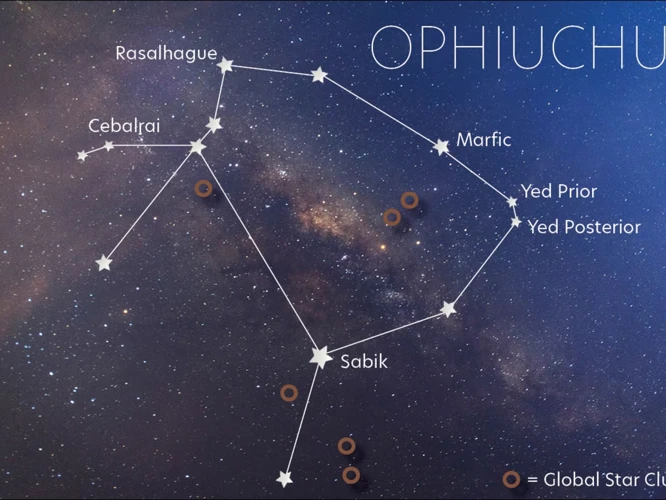
In conclusion, the Aztec Calendar stands as a testament to the ancient Aztec civilization’s remarkable achievements in timekeeping and their intricate understanding of the cosmos. This complex system serves as a window into their cultural beliefs, rituals, and perception of time. The Aztecs’ sacred and solar calendars, the Tonalpohualli and Xiuhpohualli, respectively, provided a framework for organizing their religious ceremonies and agricultural practices. The Calendar Stone, with its intricate carvings, represented the Aztecs’ cyclical understanding of time and the interconnectedness of celestial events with the human world. Despite the unfortunate demise of the Aztec civilization, their legacy lives on in the vibrant traditions, art, and cultural practices of modern-day Mexico. The Aztec Calendar continues to captivate our imagination and serves as a reminder of the profound intellect and spiritual depth of this ancient civilization. By unraveling the complexities of this ancient calendar system, we gain valuable insights into the ingenuity and cosmological understanding of the Aztecs, leaving us with a lasting appreciation for their contributions to human history.
Frequently Asked Questions

1. What is the significance of the Aztec Calendar in ancient Aztec civilization?
The Aztec Calendar held immense significance in ancient Aztec civilization as it served as a fundamental part of their religious and cultural practices. It influenced everything from agriculture and planting cycles to sacred rituals and ceremonies.
2. How did the Aztecs measure time using their calendar system?
The Aztecs measured time using two separate calendars: the Tonalpohualli, a sacred calendar of 260 days, and the Xiuhpohualli, a solar calendar of 365 days. The combination of these two calendars allowed for complex timekeeping and accurate tracking of significant celestial and agricultural events.
3. What were the components of the Aztec Calendar Stone?
The Aztec Calendar Stone, known as the Sun Stone or Stone of the Five Eras, featured intricate carvings representing various cosmic elements. These included the sun god Tonatiuh, gods of earth and sky, symbols for days, months, and celestial phenomena such as solar eclipses.
4. How did the Aztecs interpret the Tonalpohualli?
The Tonalpohualli, also known as the Sacred Calendar, was believed to govern one’s personal characteristics, fate, and destiny. It consisted of 20 day-names and 13 day-numbers, combining in a repeating cycle of 260 days. Each day had its specific meaning, offering guidance and insight into an individual’s life.
5. What was the purpose of the Xiuhpohualli, the solar calendar?
The Xiuhpohualli, the Aztec solar calendar, focused on agricultural and seasonal cycles. It determined the appropriate time for planting, harvesting, and conducting various religious ceremonies. It guided the Aztecs in understanding the rhythms of the natural world and its connection to time.
6. How did the Aztecs celebrate important dates in their calendar system?
The Aztecs celebrated important dates in their calendar system through elaborate ceremonies, rituals, and festivals. These were held to honor deities, agricultural cycles, and significant cosmic events such as equinoxes and solstices. On these occasions, the Aztecs would gather at temples, perform religious rites, and participate in community activities.
7. What role did the Aztec Calendar play in religious ceremonies?
The Aztec Calendar played a central role in religious ceremonies as it connected the physical world with the celestial realm. It guided the timing of offerings, sacrifices, and other rituals dedicated to appeasing gods and maintaining harmony in the Aztec cosmos.
8. What is the legacy of the Aztec Calendar in modern times?
The legacy of the Aztec Calendar lives on, symbolizing the rich cultural heritage of the ancient Aztec civilization. It continues to captivate the interest of scholars, historians, and enthusiasts, providing valuable insights into the Aztec worldview, their understanding of time, and the complexities of their society.
9. Is the Aztec Calendar still used today?
While the traditional use of the Aztec Calendar ceased with the Spanish colonization, some aspects of its influence are still seen in indigenous communities of Mexico. Additionally, the Aztec Calendar is celebrated in modern times through art, literature, and cultural events, showcasing its enduring importance.
10. Are there any other ancient civilizations that had similar calendar systems?
Yes, several ancient civilizations had similar calendar systems. The Maya civilization, for instance, developed a highly sophisticated calendar that also combined multiple cycles to track time accurately. The Inca civilization of South America also had its own calendar system, reflecting the importance of celestial events in their culture.
References
Frequently Asked Questions

How did the Aztecs measure time?
The Aztecs measured time using a complex calendar system that consisted of two main calendars: the Tonalpohualli and the Xiuhpohualli. These calendars were based on different cycles and combinations of days, months, and years.
What was the purpose of the Aztec calendar?
The Aztec calendar served as a way to organize and track time, as well as to determine auspicious dates for various rituals, ceremonies, and agricultural activities. It played a crucial role in the religious and cultural practices of the Aztec civilization.
How accurate was the Aztec calendar?
The Aztec calendar was remarkably accurate for its time. The Xiuhpohualli, the solar calendar, had a year length of approximately 365 days, which closely aligned with the actual solar year. The Tonalpohualli, the sacred calendar, consisted of 260 days and was used for divination and religious purposes.
What were the components of the Aztec Calendar Stone?
The Aztec Calendar Stone, also known as the Sun Stone, was a massive stone sculpture that represented the Aztec cosmology and the cycle of time. It consisted of various intricate carvings, including glyphs representing the different suns or cosmic eras, as well as celestial symbols and deities.
What does the Tonalpohualli represent?
The Tonalpohualli, often referred to as the Sacred Calendar, represented a cycle of 260 days. It was comprised of 20 day signs (glyphs) combined with 13 numbers. Each day had a unique combination of a day sign and a number, creating a continuous cycle that was used for divination and determining personal characteristics.
What does the Xiuhpohualli represent?
The Xiuhpohualli, also known as the Solar Calendar, represented a cycle of approximately 365 days. It was based on the solar year and consisted of 18 months, each lasting 20 days, with an additional 5-day period called the Nemontemi. The Xiuhpohualli determined agricultural activities and festivities.
How did the Aztecs celebrate the passing of a tonalpohualli cycle?
At the end of each Tonalpohualli cycle, the Aztecs celebrated the “Binding of the Years” ceremony. It was a time of purification and renewal, where offerings were made to the gods, and various rituals, dances, and games were held to commemorate the completion of a sacred period in their calendar.
What were some important Aztec festivals and ceremonies tied to the calendar?
The Aztecs had a wide range of festivals and ceremonies tied to their calendar. Some notable ones include the New Fire Ceremony, which took place every 52 years as a time of renewal and rebirth, as well as the Feast of the Sun, a major celebration honoring the sun god and marking the summer solstice.
How did the Aztec calendar influence everyday life?
The Aztec calendar had a profound influence on everyday life in Aztec society. It dictated the timing of agricultural activities, religious festivals, and important events such as warfare and trade. It also played a crucial role in determining individual destinies and guiding social interactions.
What is the legacy of the Aztec calendar?
The legacy of the Aztec calendar can still be seen today in the cultural practices and traditions of modern-day Mexico. It continues to be studied and interpreted, providing insights into the rich history and complex cosmology of the Aztec civilization. The intricate carvings of the Aztec Calendar Stone also serve as a testament to the artistic and scientific achievements of the Aztecs.
References
- The Aztec Calendar Stone (Getty Research Institute)
- The secret messages hidden in the Aztec Calendar







